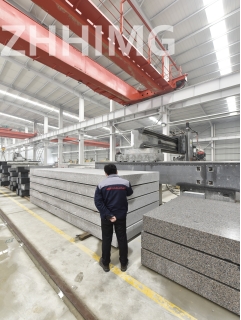Granite is a commonly used material in the design of measuring instruments due to its durability, stability and resistance to wear and tear. When considering integrating granite components into the design of a measuring instrument, there are several important factors to consider.
First, the physical properties of granite make it an ideal material for precision instruments. Its high density and low porosity make it resistant to warping and corrosion, ensuring the accuracy and longevity of measuring instruments. In addition, granite has excellent thermal stability, which is critical to maintaining the accuracy of measuring instruments exposed to fluctuating temperatures.
Another consideration is the machining and finishing of granite components. Precision machining techniques are required to achieve the tight tolerances and smooth surfaces required for accurate measurements. Granite's hardness also means that specialized tools and equipment are needed to cut, shape and polish parts. Therefore, it is essential to work with an experienced fabricator who has the expertise and ability to handle granite with precision and care.
In addition, the design and integration of granite components should take into account the overall stability and vibration resistance of the measuring instrument. Granite's natural damping properties help minimize the effects of external vibrations, ensuring reliable and consistent measurements. The placement and installation of granite components within the instrument should be carefully considered to maximize its vibration-damping capabilities.
In addition to its functional advantages, granite is also aesthetically pleasing, adding a professional and high-quality look to measuring instruments. Its natural beauty and variety of colors and patterns can enhance the overall design and attract users and customers.
Overall, integrating granite components into the design of measuring instruments requires careful consideration of their physical properties, processing requirements, stability, and aesthetic appeal. By considering these factors, manufacturers can create precision instruments that meet the industry's high standards for durability, accuracy, and professional appearance.
Post time: May-13-2024

